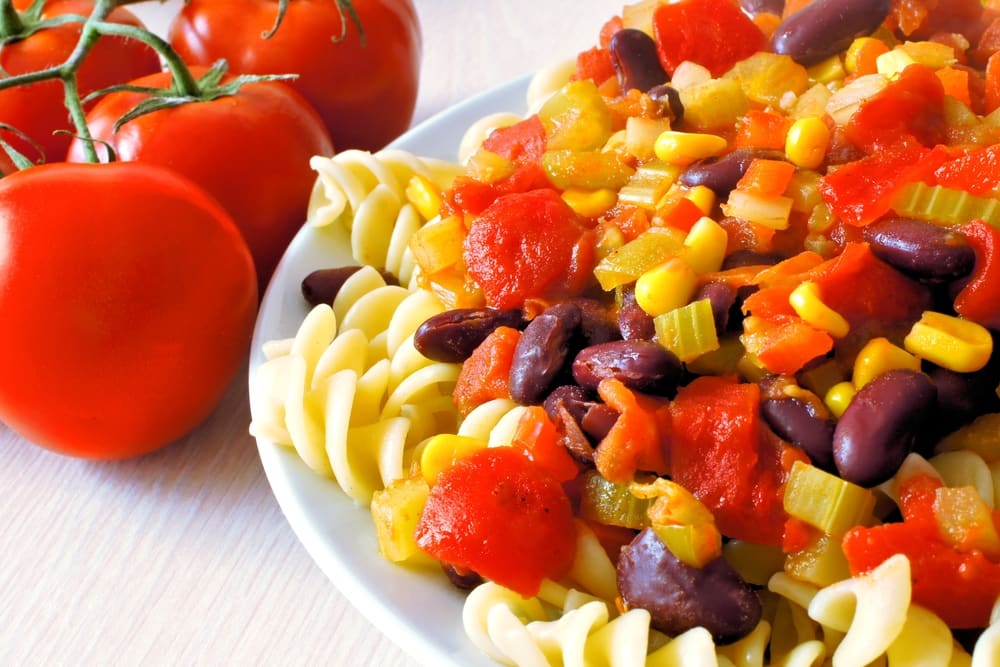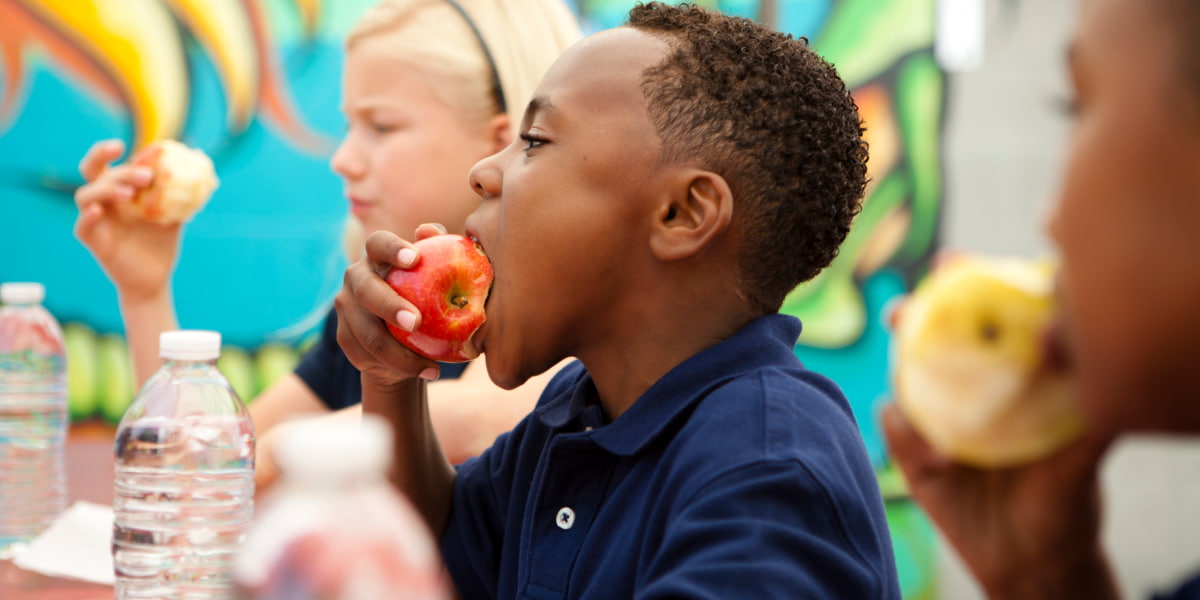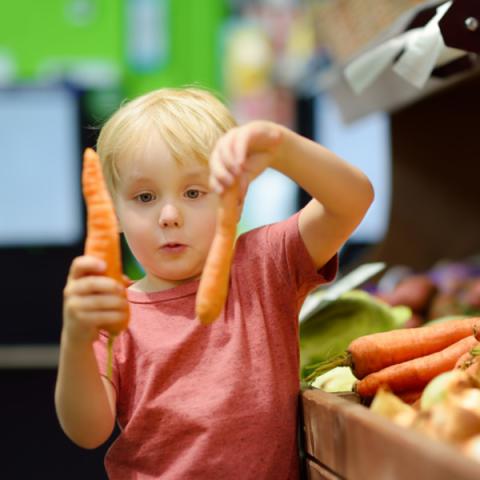Here’s what schools are doing to ensure that children can eat a healthy, balanced diet.
Changes to school meals
How are school meals changing?
Since April 2021, school meals have changed in the following ways:
- Schools now provide more access to fruit and vegetables, which helps contribute towards meeting the ‘at least five a day’ recommendation we should all try to eat.
- Schools reduce the amount of sugar that can be eaten during the school day, for example, by lowering the amount of sugar in school meals.
- Schools provide up to 175g of red and red processed meat over the course of the primary school week and 230g over the course of a secondary school week, which is based on the advice given in the Scottish Dietary Goals.
- Schools continue to ensure that children and young people have access to an appropriate amount of nutrients, such as iron and vitamins, taking account of the updated advice in the Scottish Dietary Goals, as part of their lunch. As these nutrients can come from a range of sources, all pupils, regardless of their dietary choices (for example, if they’re vegetarian or vegan), can continue to be offered a balanced and nutritious school lunch.
- Provision in secondary schools now offers more flexibility for pupils. So they should be able to buy a wide range of items like sandwiches or home baking more frequently across the school day (rather than just at lunchtime) but those items will contain less fat and sugar to account for that increased frequency. Pupils who prefer to have a 2 course meal at lunchtime can still do to.
Can I have any say in what my child eats at school?
Yes. Each Local Authority in Scotland designs its own school menus, and they’re encouraged to consult with pupils and families when they’re doing this. Get in touch with your child’s school if you’re keen to have input on the school menu.
What if my child can’t eat certain foods?
If your child has any dietary needs – for example, if they can’t eat gluten or dairy foods, or are vegetarian or vegan – they should still be able to eat school meals. However, it’s best to get in touch with your child’s school to make sure they can eat what’s on offer. If they have food allergies, it’s a good idea to send the school copies of any letters, emails or texts you’ve been sent by your GP or a dietitian that confirms this, along with any medical advice your child’s been given.
How do I know meals at my child’s school will reach the new standards?
Schools and local councils work with Health and Nutrition Inspectors based at Education Scotland to ensure that school meals meet the standards set by the Scottish Government. You can find out more about Health and Nutrition Inspections at the Education Scotland website.
Can my child get free school meals?
All children get free school meals during term-time if they go to a local authority school and are in primary 1, 2, 3, 4 or 5.
Please visit the mygov.scot website to find out if your child is eligible to receive free school meals.
Will the food still appeal to children?
Yes, the changes allow schools to provide food and drink that appeals to children and young people’s tastes, as well as meet their nutritional needs, so traditional lunch time favourites will still be available. Schools are being encouraged to consult with their children and young people, as well as parents, when designing new menus.
Does my child still get options to choose from each day?
Yes, schools still have the flexibility to plan their menus, offering a variety of nutritious options throughout the course of the school week. Schools are encouraged to consult with pupils and families when deciding what to include on their menus.
How and when will pupils have access to fruit and vegetables to help meet their ‘5 a day’?
Fruit and vegetables should be made available at all times of the school day, not just at lunch time, in full portions, or a combination which adds up to full portions. Pupils can access these full portions of fruit and vegetables wherever food and drink is served in school, for example, in breakfast clubs or at tuck shops. This helps ensure schools are contributing towards children and young people eating at least five portions of fruit and vegetables each day.
What are schools doing to encourage older pupils to eat in school rather than buying lunch off site?
All local authorities are required to promote school lunches and in particular free school lunches. Schools use a range of measures to encourage young people to take a school lunch, such as grab-and-go services and pre-order systems, as well as sit-down lunches. Schools may also provide lunch time activities which appeal to young people to encourage them to use the school catering service.
My child isn’t able to use a knife or fork yet, will the food be easy for them to eat?
School meals should meet the needs of all pupils, but if you have concerns about how well your child’s managing, the best thing to do is to speak to your school. They’ll be happy to work with you and your child to make sure they get a balanced and nutritious school lunch. School lunch menus are shared in advance, so you can see what’s on offer and discuss any potential issues in advance, before they have any impact on your child.
Our page on helping your child to use cutlery has practical tips for getting wee ones used to using a knife, fork and spoon.
Are younger children left to eat or will staff encourage eating?
At the servery, the catering staff encourage children to try new menu items. In the sitting area, teachers and/or education support staff encourage children to eat what’s on their plates. If your child isn’t eating enough, the school will let you know and can help you get to the bottom of the issue.
Will food and drink be available at other times of the day?
All food and drink served in schools must be balanced and nutritious and reflect current dietary advice. This includes breakfast clubs, tuckshops, nurture groups, lunchtimes and after school clubs, so anywhere pupils can access food and drink in school. Current dietary advice recommends we reduce the amount of sugar we eat, eat more fruit and vegetables and keep within recommended amounts when eating red and red processed meat.
How will my school encourage the healthy options available to pupils?
Schools will continue to promote school lunches using a range of methods. In addition, food education continues to be an important part of the curriculum. Children and young people are taught about the importance of food and drink to their growth and development and the impact their choices have on their health and wellbeing. This learning is then demonstrated by the choices they will see in the dining hall and at other food and drink outlets in the school.
Where do the ingredients for school meals come from? Are they sustainably sourced?
Local authorities are encouraged to use local produce wherever possible and they must consider how sustainably produced the food they provide is. Schools don’t have to use organic produce but of course they can if they wish.
How much food waste is recycled or donated to others?
Each local authority makes their own decisions about waste management based on local needs, priorities and opportunities. Many schools take part in programmes such as Eco-Schools and support their children and young people to help increase recycling and reduce waste. Have a look at your school or local authority’s website or get in touch with them to find out what they do to support environmentally friendly practices.
My child has packed lunches – how can I get more veg into my child’s lunchbox?
Adding veggies to your child’s packed lunch is a great way of ensuring they get their five a day – but will they eat them? If your child isn’t used to veg in their packed lunch, they may pick it out for the first few days. But the more they see it, the more the veg becomes ‘normal’. Here are some easy ways of getting more veg into your child’s lunchbox alongside other important food groups as part of a balanced lunch.
You can find more tips on this handy download from Veg Power or on the Veg Power website.
Tip #1: Lunch crunch
Include a handful of raw snack veg like carrots, peppers and celery. It may go down better if you pack some low fat dip as well, like hummus or cream cheese.
Tip #2: Pasta power

Cooking pasta in the evening? Do a bit more than you need then mix it with some chopped veggies for a cold pasta salad lunch.
Tip #3: Sandwich stealth
Sneak some veg into their sandwiches – try sliced cucumber or tomato, grated carrot, lettuce or spinach leaves.
Tip #4: Salad on a stick
Make veg fun by threading chopped peppers, mushrooms, cherry tomatoes, radishes, cubed cucumber or beetroot onto a lolly stick or skewer. Yum!
 Activities & Play
Activities & Play Behaviour
Behaviour Childcare
Childcare Development & Growing Up
Development & Growing Up Family, Friends & Relationships
Family, Friends & Relationships Feeding Your Baby
Feeding Your Baby Food & Eating
Food & Eating Health & Safety
Health & Safety Mental Health & Wellbeing
Mental Health & Wellbeing Money & Work
Money & Work Online Behaviour & Safety
Online Behaviour & Safety Pregnancy & First Days
Pregnancy & First Days School & Education
School & Education Sleep
Sleep










 Online Behaviour & Safety
Online Behaviour & Safety
 Childcare
Childcare